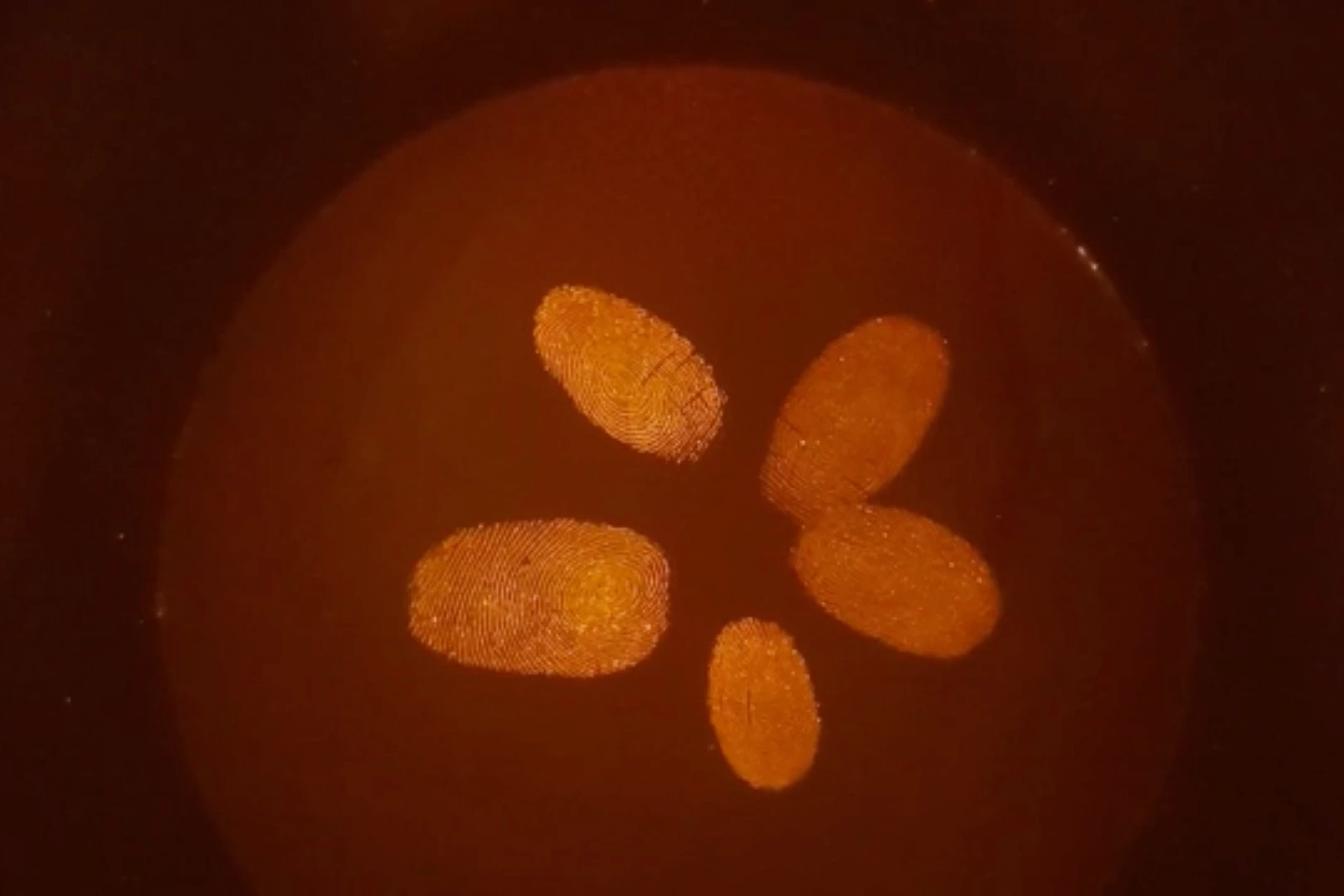An experimental new forensic spray allows latent fingerprints to be made visible in just 10 seconds, plus it doesn't require the use of any messy powders. What it does incorporate, however, is a glowing protein that's obtained from jellyfish.
Current methods of lifting fingerprints from crime scenes utilize fine powders or fuming chemical reagents. In both cases, obtaining a usable print takes at least a few minutes. Additionally, compounds in the powders or reagents may damage DNA in the sweat or skin oil that makes up the print.
Scientists from Britain's University of Bath and China's Shanghai Normal University have now come up with an alternative, in the form of the new non-toxic, water-soluble spray.
There are actually two versions of it containing two different dyes, namely LFP-Yellow and LFP-Red. Users choose one or the other depending on the color of the surface from which they're lifting prints, so that the prints really stand out against their background when made visible.

Both dyes are derived from a substance produced by jellyfish, called Green Fluorescent Protein (GFP). That protein is already widely used in scientific studies to visualize biological processes, without affecting those processes. It likewise doesn't affect the DNA which may be present in fingerprints.
As soon as the spray has been applied to a surface, the positively-charged dye molecules bind with negatively-charged fatty or amino acid molecules in the fingerprint sweat or oil. The dye molecules are then "locked in place" along all the telltale whorls and ridges of the print.
When exposed to blue light, those molecules fluoresce in their yellow or red color within no more than 10 seconds. A smartphone camera can then be used to record their images for subsequent reference.
The spray itself is made up of very fine droplets, so it won't physically damage fingerprints by splashing on them. It's also effective at lifting prints off of rough surfaces such as brick, which can be very difficult when using traditional techniques. What's more, those prints can be lifted up to one week after being left by the suspect.
"We hope this technology can really improve the detection of evidence at crime scenes," said the principal investigator, Shanghai Normal University's Prof. Chusen Huang. "We are now collaborating with some companies to make our dyes available for sale. Further work is still ongoing."
The research is described in a paper that was recently published in the Journal of the American Chemical Society.
Source: University of Bath




